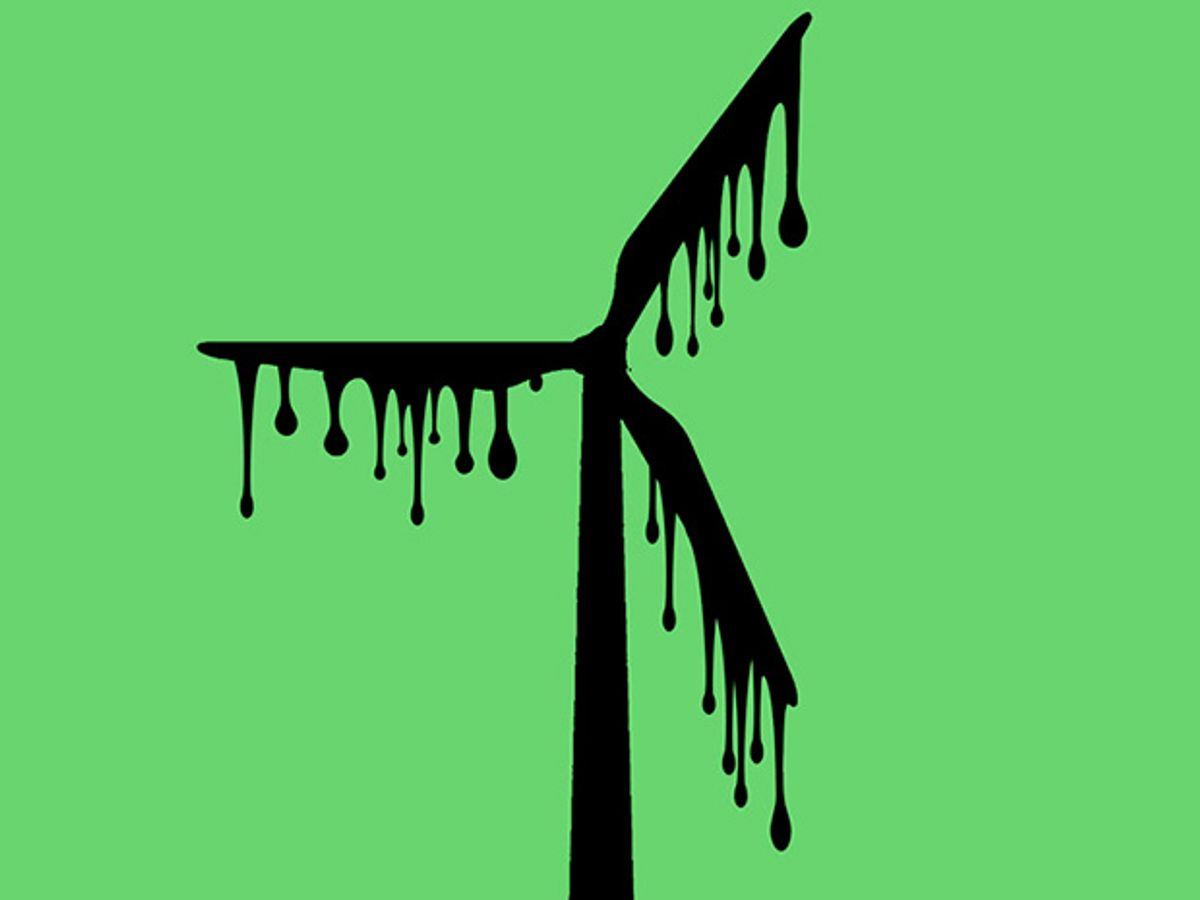Wind turbines are the most visible symbols of the quest for renewable electricity generation. And yet, although they exploit the wind, which is as free and as green as energy can be, the machines themselves are pure embodiments of fossil fuels.
Large trucks bring steel and other raw materials to the site, earth-moving equipment beats a path to otherwise inaccessible high ground, large cranes erect the structures, and all these machines burn diesel fuel. So do the freight trains and cargo ships that convey the materials needed for the production of cement, steel, and plastics. For a 5-megawatt turbine, the steel alone averages [pdf] 150 metric tons for the reinforced concrete foundations, 250 metric tons for the rotor hubs and nacelles (which house the gearbox and generator), and 500 metric tons for the towers.
If wind-generated electricity were to supply 25 percent of global demand by 2030 (forecast [pdf] to reach about 30 petawatt-hours), then even with a high average capacity factor of 35 percent, the aggregate installed wind power of about 2.5 terawatts would require roughly 450 million metric tons of steel. And that’s without counting the metal for towers, wires, and transformers for the new high-voltage transmission links that would be needed to connect it all to the grid.
A lot of energy goes into making steel. Sintered or pelletized iron ore is smelted in blast furnaces, charged with coke made from coal, and receives infusions of powdered coal and natural gas. Pig iron is decarbonized in basic oxygen furnaces. Then steel goes through continuous casting processes (which turn molten steel directly into the rough shape of the final product). Steel used in turbine construction embodies typically about 35 gigajoules per metric ton.
To make the steel required for wind turbines that might operate by 2030, you’d need fossil fuels equivalent to more than 600 million metric tons of coal.
A 5-MW turbine has three roughly 60-meter-long airfoils, each weighing about 15 metric tons. They have light balsa or foam cores and outer laminations made mostly from glass-fiber-reinforced epoxy or polyester resins. The glass is made by melting silicon dioxide and other mineral oxides in furnaces fired by natural gas. The resins begin with ethylene derived from light hydrocarbons, most commonly the products of naphtha cracking, liquefied petroleum gas, or the ethane in natural gas.
The final fiber-reinforced composite embodies on the order of 170 GJ/t. Therefore, to get 2.5 TW of installed wind power by 2030, we would need an aggregate rotor mass of about 23 million metric tons, incorporating the equivalent of about 90 million metric tons of crude oil. And when all is in place, the entire structure must be waterproofed with resins whose synthesis starts with ethylene. Another required oil product is lubricant, for the turbine gearboxes, which has to be changed periodically during the machine’s two-decade lifetime.
Undoubtedly, a well-sited and well-built wind turbine would generate as much energy as it embodies in less than a year. However, all of it will be in the form of intermittent electricity—while its production, installation, and maintenance remain critically dependent on specific fossil energies. Moreover, for most of these energies—coke for iron-ore smelting, coal and petroleum coke to fuel cement kilns, naphtha and natural gas as feedstock and fuel for the synthesis of plastics and the making of fiberglass, diesel fuel for ships, trucks, and construction machinery, lubricants for gearboxes—we have no nonfossil substitutes that would be readily available on the requisite large commercial scales.
For a long time to come—until all energies used to produce wind turbines and photovoltaic cells come from renewable energy sources—modern civilization will remain fundamentally dependent on fossil fuels.
This article appears in the March 2016 print issue as “What I See When I See a Wind Turbine.”
